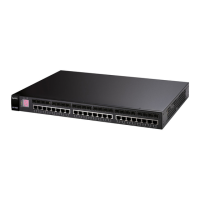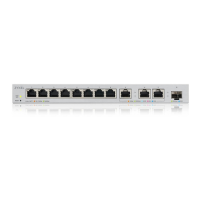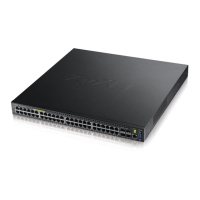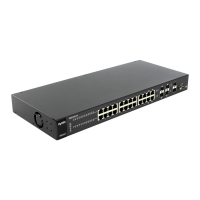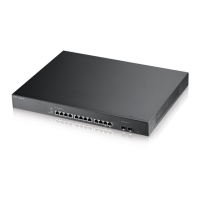Chapter 8 Basic Setting
XGS4600 Series User’s Guide
114
8.10 Loopback Interface
The loopback interface is a virtual interface which can be assigned an IP address and used by routing
protocols. The loopback interface does not need to be connected to any devices and will always be
available if the Switch is functioning normally and connected to a network. You can enable multiple
loopback interfaces on the Switch, and each loopback interface must be uniquely identified.
The Switch can use a loopback interface address as the source address of all packets that originate
from the Switch. Filters can then be applied to the loopback address to protect the system.
Click the link next to IPv4 Loopback Interface in the Basic Setting > Loopback Interface screen. The
following screen opens.
Figure 88 Basic Setting > Loopback Interface
8.10.1 IPv4 Loopback Interface
Use this screen to configure IPv4 loopback interfaces on the Switch.
Figure 89 Basic Setting > Loopback Interface > IPv4 Loopback Interface
The following table describes the labels in this screen.
Table 36 Basic Setting > Loopback Interface > IPv4 Loopback Interface
LABEL DESCRIPTION
Loopback
Interface ID
Select the ID of loopback interface you want to configure.
Active Select this option to enable the interface.
Name Enter a descriptive name for the IPv4 loopback interface for identification purposes. This name
consists of up to 64 printable characters; spaces are allowed.
IP Address Enter the IP address of your Switch in dotted decimal notation, for example, 192.168.1.1. This is
the IP address of the Switch in an IP routing domain.
IP Subnet Mask Enter the IP subnet mask of an IP routing domain in dotted decimal notation, for example,
255.255.255.0.
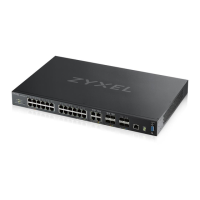
